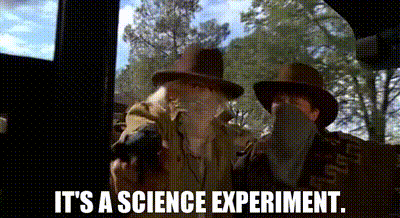Just to recap, here's a really brief summary of the issue followed by my own tests/results.
The yellowing of ABS plastics is caused by oxygen interacting with one of the molecules in the plastic. The oxygen atom bumps some stuff out of the way, there's a floating free radical, bada-bing, a new polymer is formed. This new polymer is just on the surface of the plastic. It absorbs some visible light (the yellow kind), the rest bounces off, and boom, you have a thin layer of yellow on the surface. Heat / UV can speed this process up, but it will happen regardless.
Retro-briting is the process of undoing this by redoing it. Using hydrogen peroxide, the weak oxygen atom gets busted loose from the peroxide, nudges its way into the yellow polymer, forms yet another polymer (with better bonds!), and essentially bleaches the yellow compound. The new polymer reflects all light, hence it's white. Heat/UV can speed this process up.
So, eventually, this means that it is possible for the yellowing to return as atoms get shared like a cheap hooker. But, at the very least, without direct sunlight and heat, it will take a very long time.
But this also means that it's not the gas (oxygen) by itself which is helping to retro-brite. You can totally submerge the chips in the peroxide with the same (if not better) results.
Method | Time | Result |
| 3% Hydrogen Peroxide | Very Long (24+ hours) | Virtually no change |
| 3% Hydrogen Peroxide + UV Light (UVA) | Long (12 hours) | Very Good (VG) Whitening |
| 3% Hydrogen Peroxide + Heat | Medium (8 hours) | Very Good (VG) Whitening |
| 3% Hydrogen Peroxide + UV-A/B/C (Sun) + Heat | Shortest (6 hours) | Very Good (VG+) Whitening |
Things that could
REALLY help this process along:
- Using a higher concentration (like 12%) of hydrogen peroxide
- Combining a heat source, that is not the sun, along with UVA light (UVC is not the best for plastics)
Here are some of the variations I performed (all with 3% hydrogen peroxide)
- Sealed glass container in direct sunlight
- Chips suspended by magnets so they did not touch the solution
- Chips submerged in the hydrogen peroxide
- Sealed glass container at room temperature for 24 hours with chips submerged
- Black plastic container in direct sunlight with chips submerged (basically no UV, but heat)
- Open glass container at room temperature with direct UVA light for 24 hours
This all kind of needs a formal write-up. But the BIGGEST takeaways are:
- 3% hydrogen peroxide seems sufficient for this process and seems safe for full chip submersion in the liquid
- Heat and/or UV speed the process along; either works well, both work slightly better than either alone.
- 6 hours seems to be where the additional time has a deminishing effect.
What Would I Do in the Winter?
Without a combination heat/UV source like the sun, I would most likely use my UVA lights at room temperature. It would take longer, but the 1 test I ran produced results that I was happy with.
Did You Really Heat Hydrogen Peroxide?
I can just see the headlines now. "East Windsor man blows up house trying to whiten Borgata poker chips. When approached for comment, he was being carried off by men in white coats while yelling at them about the differences between inlays and labels." Yes - I did it heat it; outside on a hot plate. With those loose oxygen atoms, I'm not taking any chances here ... It was heated under an SPF-80 awning in the shade at around 75 degrees.


